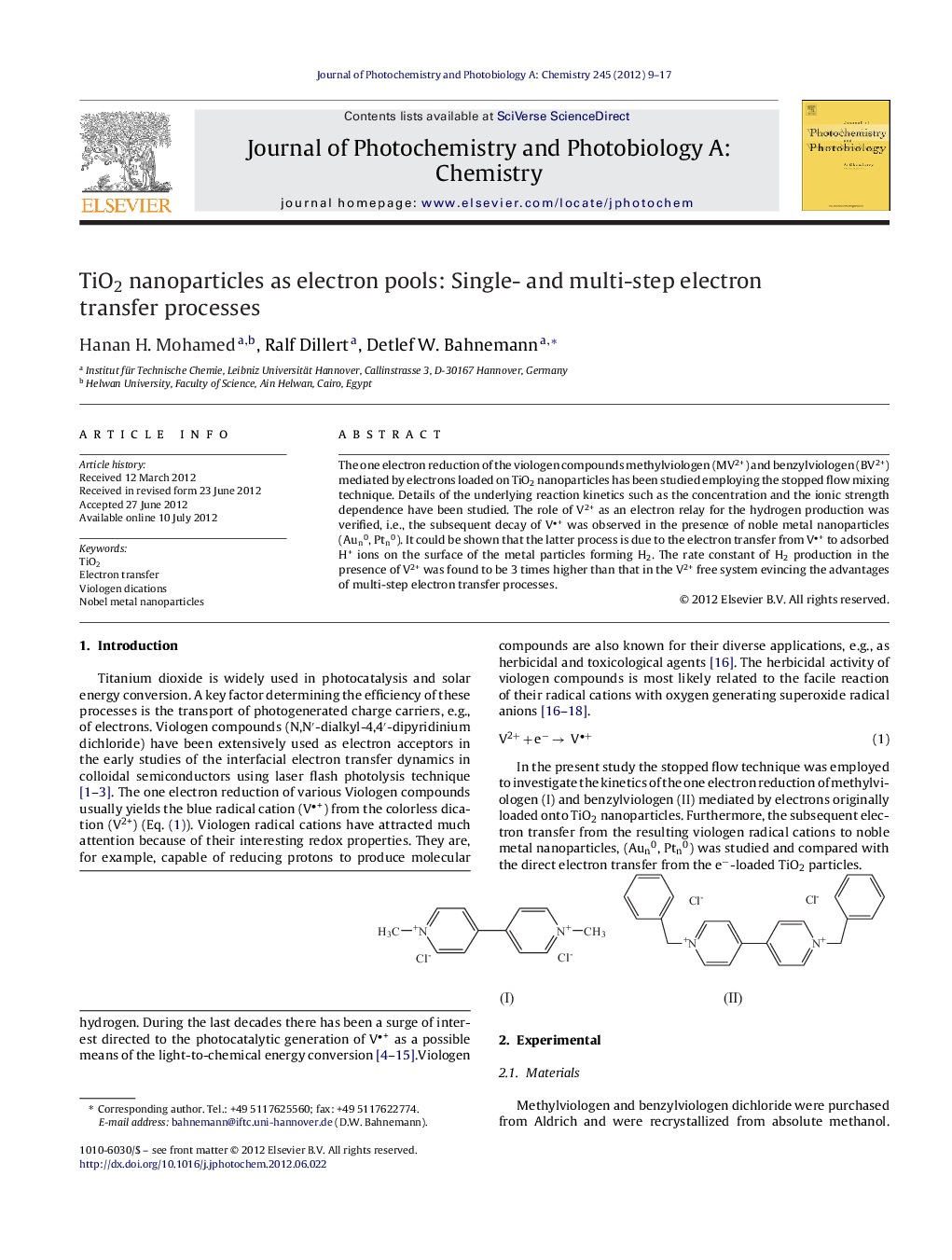| Article ID | Journal | Published Year | Pages | File Type |
|---|---|---|---|---|
| 26226 | Journal of Photochemistry and Photobiology A: Chemistry | 2012 | 9 Pages |
The one electron reduction of the viologen compounds methylviologen (MV2+) and benzylviologen (BV2+) mediated by electrons loaded on TiO2 nanoparticles has been studied employing the stopped flow mixing technique. Details of the underlying reaction kinetics such as the concentration and the ionic strength dependence have been studied. The role of V2+ as an electron relay for the hydrogen production was verified, i.e., the subsequent decay of V+ was observed in the presence of noble metal nanoparticles (Aun0, Ptn0). It could be shown that the latter process is due to the electron transfer from V+ to adsorbed H+ ions on the surface of the metal particles forming H2. The rate constant of H2 production in the presence of V2+ was found to be 3 times higher than that in the V2+ free system evincing the advantages of multi-step electron transfer processes.
Graphical abstractFigure optionsDownload full-size imageDownload as PowerPoint slideHighlights► The one electron reduction of the viologen compounds methylviologen (MV2+) and benzylviologen (BV2+) mediated by electrons loaded on TiO2. ► The factors influencing the formation kinetics of V+ such as the initial concentration of V2+ compounds and the ionic strength have been studied. ► The kinetics of H+ reduction on the surface of Nobel metal particles Au and Pt investigated in presence and in absence of V+. ► The role of V2+ as an electron relay for the hydrogen production was verified. ► The decay of viologen radical in the presence of metal particles reveals the role of V2+ as an electron relay for hydrogen production.
